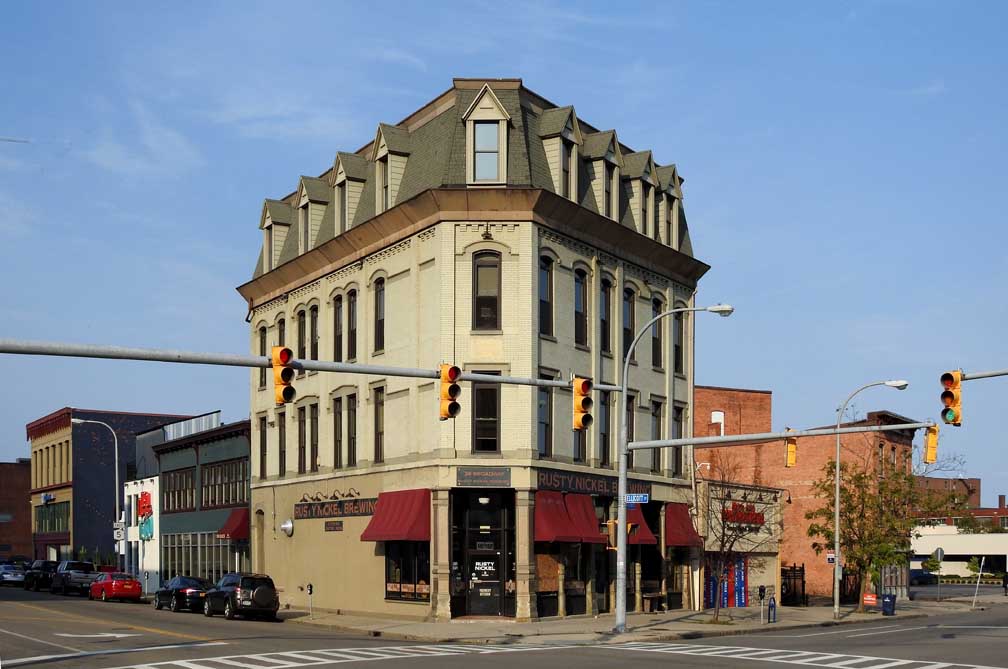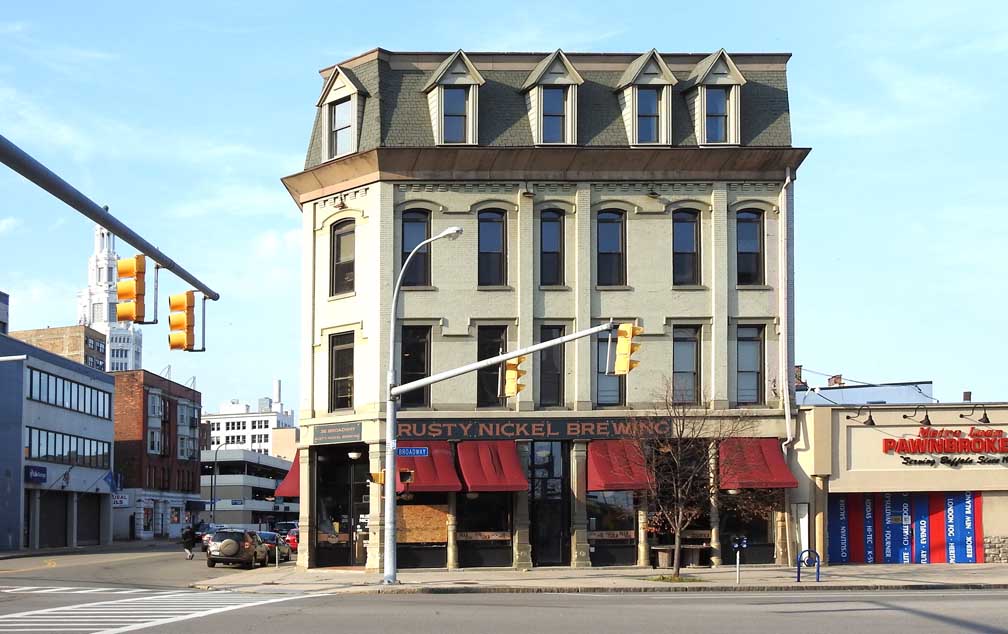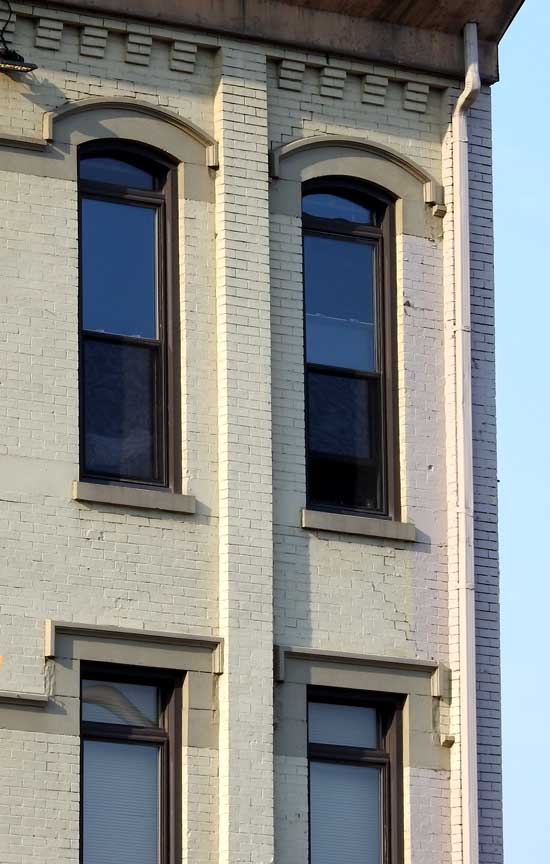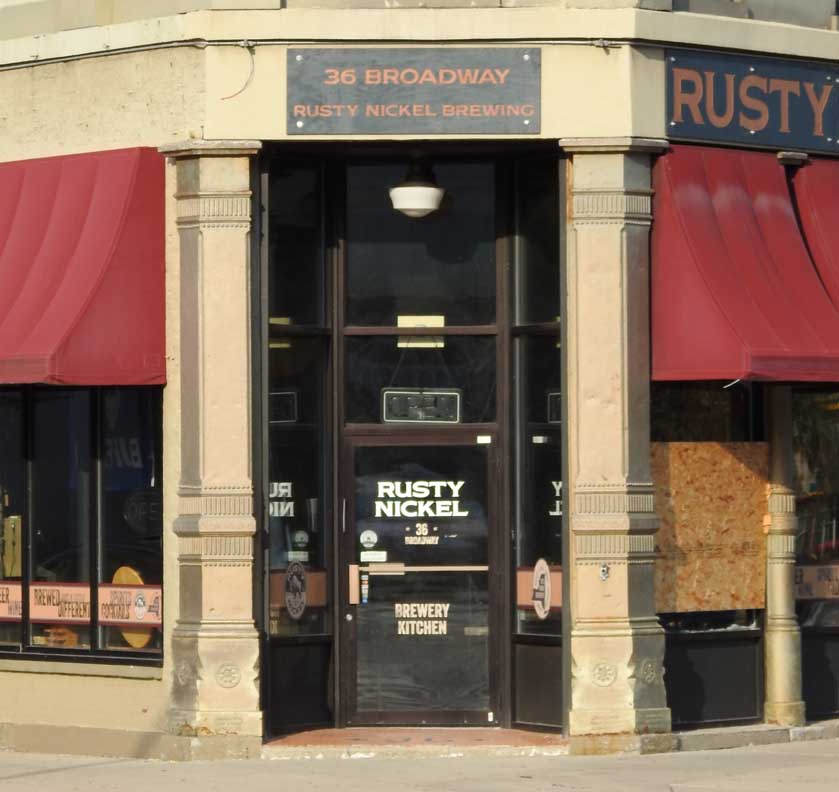Charles
Burchfield's Rainy Night: 1929 and 2020
Buehl Block, 36 Broadway
Buffalo,
NY
|
Built: |
1876 |
|
Style: |
Second Empire |
|
2020 Buehl Block owner: |
Roger Trettel |
 Charles E. Burchfield (1893-1967), Rainy Night, 1929-1930 Watercolor over graphite, 30 x 42 inches ... The San Diego Museum of Art |
In his middle period, from 1919 until 1943, promptly partly by the need to provide financially for his new family with salable pictures for the New York art market, he depicted small-town and industrial scenes that put him in the category of the American Scene or Regionalist movement, and he was able to support himself through his painting from 1928, when he resigned his wallpaper design position at Birge & Co. in Buffalo, NY. These large paintings have a solid look unusual in watercolors, resembling oil paintings, and they are the works most often seen in art history texts. Though one critic commented that Burchfield was "Edward Hopper on a rainy day," a 1936 Life Magazine article named him one of America's 10 greatest painters. - WahooArt.com (online October 2020) |
[Charles] Burchfield, an American watercolorist focused on two themes in his work, nature and street scenes of small town life. He was born in 1893 in Ashtabula Harbor, Ohio. At the age of 28 he took a position as a designer at M.H. Birge & Sons a wallpaper firm in Buffalo, New York. Rainy Night came about at a critical point in the artist’s career. A month after his preliminary study for this work, he joined the Frank K.M. Rehn galleries to represent his watercolors. This prominent New York gallery also represented Edward Hopper who became a friend of Burchfield. In August 1929, feeling confident that he could support himself solely through the sale of his work, and with his wife’s encouragement, he resigned his position at M.H. Birge & Sons. In this large watercolor measuring 32 by 40 inches, Burchfield depicted a group of buildings in downtown Buffalo at the corner of Broadway and Elliciott Street. In 1944 the artist commented: ‘The aim here was not to caricature but to give a mood and sense of the weather and time of day. I made a sketch one evening in late January, 1929 and finished it in 1930. I stood in the rain and caught a cold... I’ve exaggerated the foreground, as if I were looking down from a higher point. A man in New York once said ‘Your pictures are always so dreary, cold and rainy. Why don’t you paint a girl getti ng into a taxi. So I did...” While the four story building with a mansard roof dominated his composition, Burchfield brilliantly used light to activate the scene, including the watery reflections from the restaurant, car lights, street lights and an unseen moon that backlights the buildings. In a journal entry Burchfield noted that he received a letter from his dealer, Frank Rehn, just before Christmas, 1939. Rehn mentioned that “The San Diego Museum has bought Rainy Night for $1500.” This may not seem like a large amount but in 1939 the average annual income in the United States was $1,368. As a final note, Burchfield wrote Reginald Poland, the Museum Director on March 13, 1940 and stated: “I feel it has an excellent home now.” - San Diego Museum of Art (online October 2020) |
October 6, 2020 photos  Buehl Block ... Second Empire style features mansard roof with numerous large dormers, and tall hooded windows   Brick corbel tables ... Rounded hoodmolds with label stops ... Square-arched label hoodmolds with label stops  Cast iron columns  |
